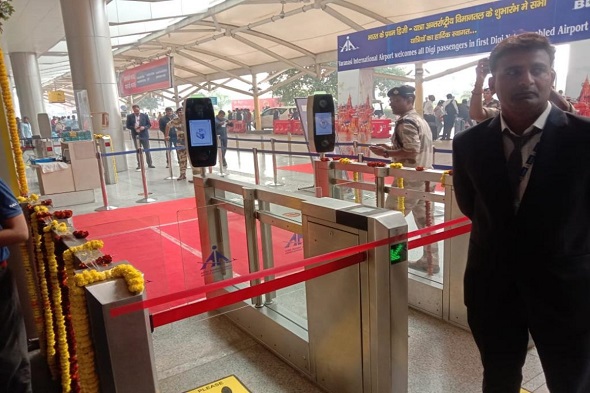DigiYatra: These airports in India now have facial recognition technology. How does it work?
Sun 04 Dec 2022, 09:30:43

Starting Thursday, the government has introduced paperless entry at selected airports to make air travel hassle-free. Under this initiative, airports will use a facial recognition software called ‘DigiYatra’ for entry. This means, passengers won’t need to carry their ID card and boarding pass.
In the first phase, the initiative will be launched at seven airports, starting with three — Delhi, Bengaluru, and Varanasi, followed by four airports namely Hyderabad, Kolkata, Pune, and Vijayawada by March 2023. Subsequently, the technology will be implemented across the country.
The Delhi International Airport Ltd (DIAL), run by GMR, had in August announced the soft launch of the Centre’s DigiYatra initiative, rolling out the beta version of its app for Android platforms. The Delhi airport has the required infrastructure set up at the airport’s Terminal 3, and other airports are also setting up the requisite infra for it.
What is DigiYatra and how will it work?
DigiYatra envisages that travellers pass through various checkpoints at the airport through paperless and contactless processing, using facial features to establish their identity, which would be linked to the boarding pass. With this technology, the entry of passengers would be automatically processed based on the facial recognition system at all checkpoints – including entry into the airport, security check areas, aircraft boarding, etc.
Which airports/airlines offer the facial recognition technology?
The facility will be available for passengers taking domestic flights at Delhi’s Terminal 3, Bengaluru and Varanasi airports. DigiYatra will be launched at four more airports — Hyderabad, Pune, Vijaywada and
Kolkata — by next March. Later, DigiYatra will be rapidly rolled out across all other airports.
Kolkata — by next March. Later, DigiYatra will be rapidly rolled out across all other airports.
Among airlines, passengers travelling Air India, Vistara and IndiGo on their domestic network can avail this facility at the three airports. SpiceJet, GoFirst and Akasa Air are yet to offer the DigiYatra facility.
How can people avail the DigiYatra facility?
For availing the service, a passenger has to register their details on the DigiYatra app using Aadhaar-based validation and a self image capture. In the next step, the boarding pass has to be scanned, and the credentials are shared with airport authorities.
At the airport e-gate, the passenger has to first scan the bar coded boarding pass and the facial recognition system installed at the e-gate will validate the passenger’s identity and travel document. Once this process is done, the passenger can enter the airport through the e-gate.
The passenger will have to follow the normal procedure to clear security and board the aircraft.
Facial recognition technology is beneficial as it makes flying more convenient and reduces congestion at airports. The facial recognition system at various airports across the globe, including Dubai, Singapore, Atlanta and Narita (Japan), have helped bring in efficiency.
How is DigiYatra being implemented?
The project is being implemented by the DigiYatra Foundation — a joint-venture company whose shareholders are the Airports Authority of India (26% stake) and Bengaluru Airport, Delhi Airport, Hyderabad Airport, Mumbai Airport and Cochin International Airport. These five shareholders equally hold the remaining 74% of the shares.
No Comments For This Post, Be first to write a Comment.
Most viewed from General
Most viewed from World
AIMIM News
Latest Urdu News
Most Viewed
May 26, 2020
Do you think Canada-India relations will improve under New PM Mark Carney?
Latest Videos View All
Like Us
Home
About Us
Advertise With Us
All Polls
Epaper Archives
Privacy Policy
Contact Us
Download Etemaad App
© 2025 Etemaad Daily News, All Rights Reserved.










.jpg)
.jpg)
.jpg)
.jpg)
.jpg)
.jpg)
.jpg)
.jpg)
.jpg)
.jpg)
.jpg)
.jpg)

















